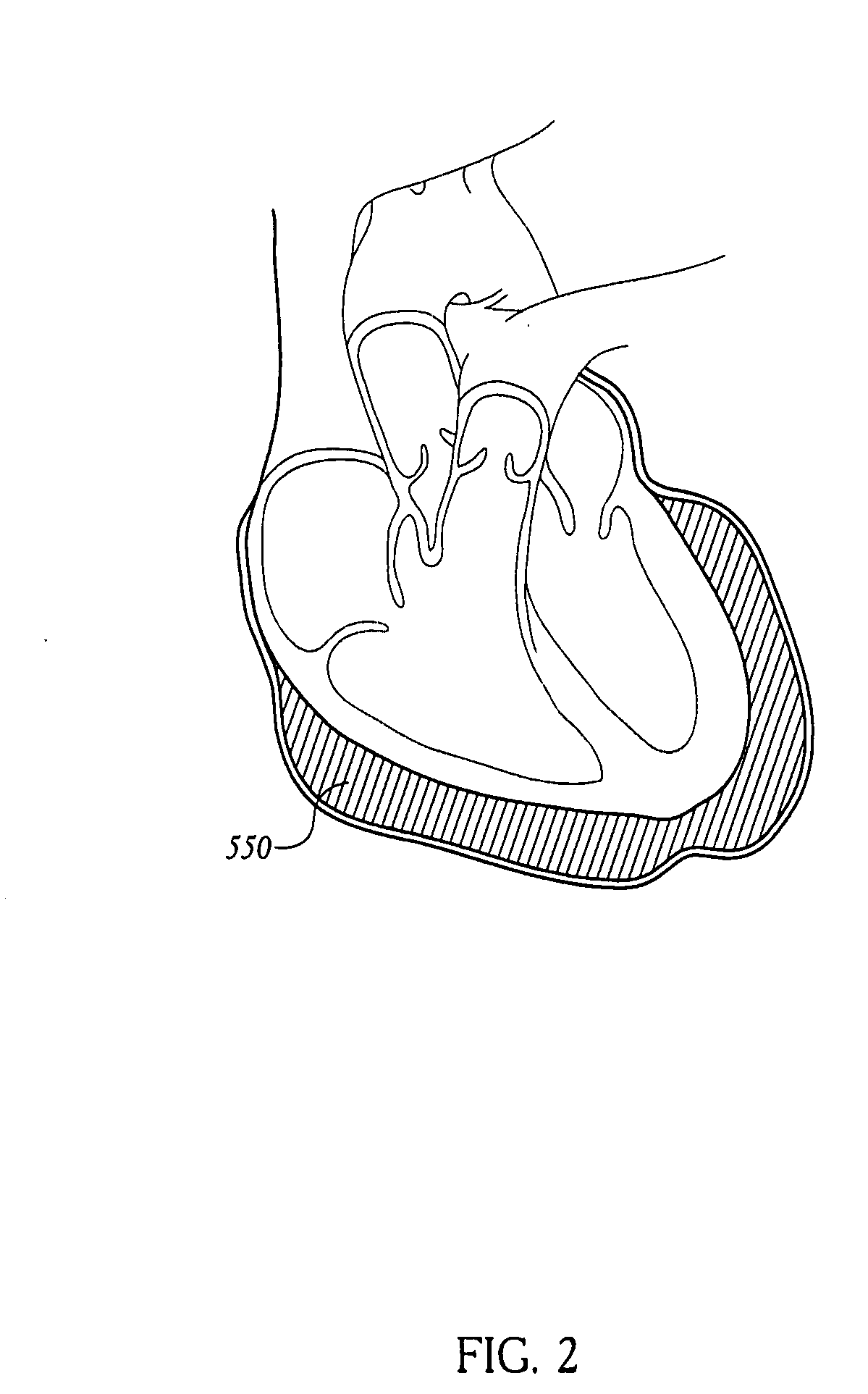Methods of using pericardial inserts
a technology of inserts and pericardial tubes, which is applied in the direction of suction devices, internal electrodes, therapy, etc., can solve the problems of inability to adjust, not removable, not adjustable, etc., to prevent effusion formation, improve the biocompatibility of inserts, and prevent ingrowth
- Summary
- Abstract
- Description
- Claims
- Application Information
AI Technical Summary
Benefits of technology
Problems solved by technology
Method used
Image
Examples
experimental verification
[0169] Experimental Verification
[0170] To verify the physiologic principles above, a series of experiments was performed. A flexible and expandable polyurethane balloon was inserted into the pericardium in a porcine animal model. A pressure measuring catheter was inserted into both the left and right ventricles. The motion of the heart walls was followed with echocardiography. The balloon was inserted over the region of the left ventricle and sequentially filled with 10 cc, 20 cc, 30 cc, 40 cc, 50 cc saline up to 160 cc. The pericardium at these filling volumes was stretched and the balloon was compressed against the left ventricle. As saline was introduced into the expandable balloon, the left ventricle became progressively compressed so that it is prevented from completely filling. At the same time, the right ventricle continued to fill normally. See Table 1 below for detailed data. Pressure data in Table 1 is expressed as systole / diastole (mean over time), with all pressures prov...
PUM
 Login to View More
Login to View More Abstract
Description
Claims
Application Information
 Login to View More
Login to View More - R&D
- Intellectual Property
- Life Sciences
- Materials
- Tech Scout
- Unparalleled Data Quality
- Higher Quality Content
- 60% Fewer Hallucinations
Browse by: Latest US Patents, China's latest patents, Technical Efficacy Thesaurus, Application Domain, Technology Topic, Popular Technical Reports.
© 2025 PatSnap. All rights reserved.Legal|Privacy policy|Modern Slavery Act Transparency Statement|Sitemap|About US| Contact US: help@patsnap.com



